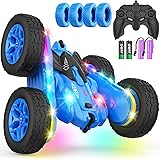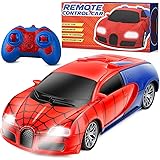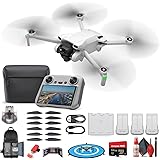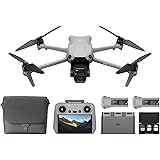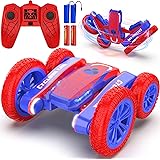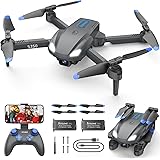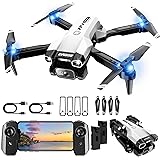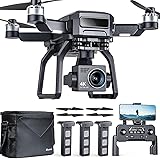Could one RC vehicle truly conquer the sky, land, and sea? The video above offers a compelling glimpse into the capabilities of a unique remote-controlled marvel. It showcases the WL TOYS Q353, an innovative RC triphibian designed for unparalleled versatility. This land-sea-air spacecraft redefines what enthusiasts expect from a single model. Let us delve deeper into its advanced engineering and operational characteristics.
The Triphibian Revolution: Unpacking the WL TOYS Q353
The concept of a truly versatile RC platform has always captivated hobbyists. The WL TOYS Q353 fulfills this ambitious vision with impressive execution. This RC triphibian is not just a drone or a boat or a car. It seamlessly transitions between these environments. The underlying design philosophy emphasizes robust performance in diverse conditions. Imagine possessing a single RC craft capable of exploring any accessible terrain. This very concept is now a tangible reality.
Furthermore, the product boasts a specific design patent certificate. This highlights proprietary engineering solutions. Such an accreditation confirms the innovative nature of its construction. It ensures the Q353 stands apart in a competitive market. This level of originality is crucial for groundbreaking RC technology. It protects the unique mechanics enabling multi-domain operation.
Essential Gear: Components and Controls of Your RC Triphibian
Upon unboxing, the WL TOYS Q353 package reveals several key components. A vibrant color box packaging protects the contents. The aircraft itself is the centerpiece, a marvel of compact engineering. It features integrated buoyancy and aerodynamic elements. The sophisticated remote control offers precise input. Chargers ensure optimal battery maintenance and quick turnarounds. Spare blades are included, an essential provision for sustained use. Finally, basic tools facilitate quick adjustments and minor repairs. Each item supports the comprehensive experience this RC triphibian delivers.
Operating this advanced RC triphibian relies on its 2.4G remote control system. This frequency ensures stable, interference-free communication. Initial setup involves a simple pairing process. First, turn on the remote control power switch. Then, pull down the left control rod completely. Simultaneously, push both the left and right rocker sticks inward. This action initiates motor rotation, confirming successful linkage. This streamlined process allows pilots to quickly enter the action. It reflects thoughtful user-centric design principles. Reliable control is paramount for such a versatile craft.
Mastering the Controls: Flight, Drive, and Sail
The charging display provides clear status indicators. This helps manage power effectively. Understanding the matching frequency description is also vital for connection stability. This ensures a consistent link between the pilot and the Q353. Imagine the frustration of signal loss during an aerial maneuver. The Q353 mitigates this through its robust 2.4G protocol. This system supports multiple products controlled concurrently. This feature is invaluable for group activities. It prevents cross-interference among multiple operators. Coordinated flight or race scenarios become perfectly feasible.
Dominating Every Domain: Land, Sea, and Air Capabilities
The true genius of the WL TOYS Q353 lies in its free transformation capability. This RC triphibian moves fluidly across different elements. It truly lives up to its “land-sea-air” designation. The design blends quadcopter kinematics with amphibious vehicle dynamics. This fusion creates an unprecedented recreational experience. Pilots can push the boundaries of conventional RC operation. It opens up new avenues for exploration and fun. The versatility is a core aspect of its appeal.
Smooth Sailing: Water Operations of the Q353
The WL TOYS Q353 sails effortlessly on the water’s surface. Its design resembles a miniature aircraft carrier gliding through the sea. It navigates with surprising agility. Hydrodynamic efficiency is clearly integrated into its hull design. Imagine if a powerful wave unexpectedly capsized your craft. No need for retrieval missions here. The Q353 boasts an impressive self-correction feature. By simply pushing the throttle, the craft can automatically right itself. This eliminates downtime and frustration. This robust recovery mechanism ensures continuous aquatic enjoyment.
Water-based take-off offers two distinct approaches. The Q353 can undergo a deformation sequence on the water. This allows it to rapidly accelerate and then fly up. This transformation optimizes its lift-off kinematics. Alternatively, it can take off straight from the water. This occurs without any physical deformation. This direct method provides a quicker transition to aerial mode. Both options highlight its adaptable propulsion system. They cater to different pilot preferences and environmental conditions.
Conquering Terrestrial Challenges: Land Maneuvers
Transitioning to land, the WL TOYS Q353 demonstrates impressive ground speed. It runs fast, agilely navigating various surfaces. Its ground propulsion system is finely tuned for quick acceleration. This allows for swift movement across open terrain. Imagine a rapid pursuit across a grassy field. The Q353 handles it with ease. Similar to its water capabilities, land take-off also offers choices. It can take off with a deformation glide. This technique builds momentum for an efficient ascent. Alternatively, it can take off straight on the land. This direct method also bypasses any physical deformation. This adaptability makes it suitable for diverse launch environments.
Soaring to New Heights: Aerial Flight Dynamics
Once airborne, the WL TOYS Q353 delivers a stable and responsive flight experience. Its quadcopter configuration provides reliable lift and control. The 2.4G system ensures strong signal integrity. This enables precise aerial maneuvers. As mentioned, it supports simultaneous control of multiple units. This is a significant advantage for multi-player scenarios. Imagine flying alongside friends, each commanding their own Q353. This enhances the communal hobby experience significantly. Its aerial prowess is as refined as its ground and water capabilities.
Advanced Functions for Enhanced Piloting
The Q353’s basic function display covers all fundamental flight controls. It moves Up, Down, Forward, and Backward with ease. Left side Fly and Right side Fly enable lateral translation. Turn Left and Turn Right provide rotational control. These intuitive controls ensure a smooth learning curve for new pilots. Experienced users will appreciate the precise responsiveness. The system facilitates sophisticated aerial maneuvers. This makes for dynamic and engaging flight sessions.
Intelligent Return-to-Home and Headless Mode
A convenient one-button return feature simplifies recovery operations. After the aircraft takes off and reaches 20 meters from the ground, press this button. The Q353 will then hover for approximately 2-3 seconds. Subsequently, it automatically flies up to 20 meters. It then begins its return trajectory. Upon successful landing, the motor automatically cuts off. This intelligent sequence prevents potential crashes or loss. Imagine avoiding extensive searches for a downed craft. This automation provides peace of mind for operators.
The headless mode offers another layer of operational simplicity. Pressing the headless mode switch for a while activates this feature. The indicator light will flash during activation. This confirms the mode is engaged. In headless mode, the aircraft no longer distinguishes its tail orientation. Regardless of the craft’s physical heading, the direction it faced at take-off is identified as “forward.” This eliminates orientation confusion, especially for new pilots. It simplifies control inputs significantly. This feature is particularly useful for maintaining consistent flight paths.
Adaptive Speed and Lighting Controls
Pilots can adjust the WL TOYS Q353’s performance with its speed switching function. It offers a fourth gear speed change capability. This allows for fine-tuning based on skill level or environmental conditions. Imagine needing slower, more deliberate flight for aerial photography. Or perhaps a faster speed for exhilarating races. The Q353 adapts to these demands seamlessly. This multi-gear system enhances its versatility further. It caters to a broad spectrum of piloting styles. The craft’s adaptable speed ensures optimal performance in any situation.
Furthermore, the lighting control feature adds practical and aesthetic value. Pressing the button briefly allows switching the integrated lights. These lights are crucial for orientation during low-light conditions. They enhance visibility, especially at dawn or dusk. Imagine flying your WL TOYS Q353 in the evening. The clear illumination ensures you track its movements. This thoughtful addition supports extended operational hours. It makes for a more visually engaging experience. This overall package solidifies the WL TOYS Q353 as a premier RC triphibian.
Triphibian Talk: Your Q353 Questions Answered
What is the WL TOYS Q353?
The WL TOYS Q353 is a unique remote-controlled (RC) vehicle known as a ‘triphibian’ because it can operate on land, sea, and in the air. This 3-in-1 design allows for versatile fun across different environments.
What kind of environments can the WL TOYS Q353 operate in?
The WL TOYS Q353 is designed to conquer land, sea, and air. It seamlessly transitions between being a drone, a boat, and a car, offering unparalleled versatility.
What is ‘headless mode’ and how does it help pilots?
Headless mode simplifies control by making the aircraft’s ‘forward’ direction always relative to the pilot, regardless of which way the craft is physically pointing. This eliminates orientation confusion, especially for new pilots.
What happens if the WL TOYS Q353 flips over while on the water?
The Q353 boasts an impressive self-correction feature; by simply pushing the throttle, the craft can automatically right itself. This eliminates downtime and frustration during aquatic use.


